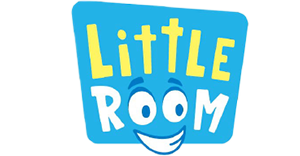Email format error
Email cannot be empty
Email already exists
6-20 characters(letters plus numbers only)
The password is inconsistent
Email format error
Email cannot be empty
Email does not exist
6-20 characters(letters plus numbers only)
The password is inconsistent

News
Happy Arts & Crafts , your reliable partner for OEM/ODM business!
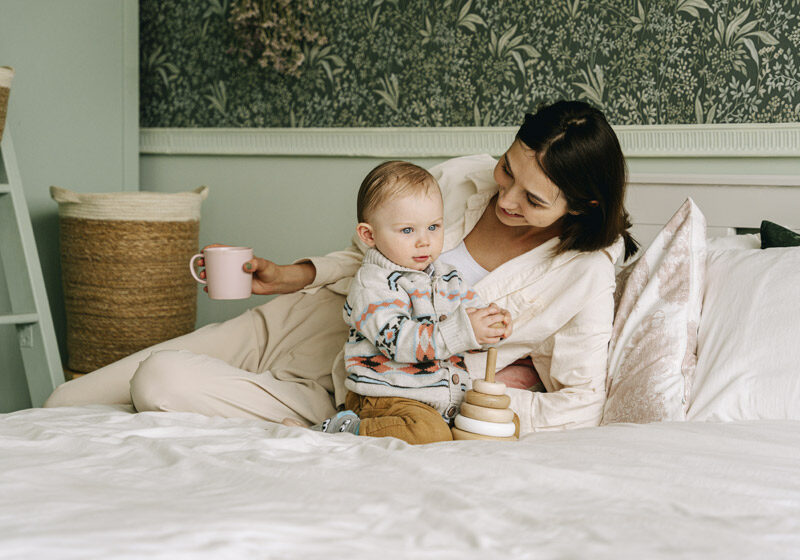
what age do babies need toys?
1. Introduction to Babies' Need for Toys
As parents, it’s natural for us to love lavishing our babies with toys that stimulate their senses, foster language development and fuel imagination. But beyond simply being a fun way to pass the time, toys are an important part of early years growth and development.Give your baby tummy time several times a day and let them explore.Here is what you need to know about why babies need toys and how to introduce them:
1. Understand the Benefits
Toys play a significant role in helping babies reach developmental milestones. Age-appropriate toys give babies the opportunity to refine gross motor skills like crawling and walking. By introducing a variety of objects with different textures, colors, sounds and shapes, they can begin exploring the world around them while developing fine motor skills as they reach out, grab and manipulate those items.
2. Choose Appropriate Toys
When selecting toys for your baby, look for objects that have lots of bright colors and differ in size or shape for tactile exploration. Include items that make different noises – like rattles or squeezable squeaky animals – which help develop auditory processing skills. And also consider adding some interactive toys such as block stackers which encourage problem-solving by helping newborns sort through different sizes and shapes to fit each piece together properly
3. Introduce New Toys Strategically
Introducing new age-appropriate toys slowly into your baby’s collection will keep them engaged longer since it can take time for young ones to explore all the features of a single item before reaching exhaustion with it. Start by choosing one or two new items at a time so that they are spread out over several weeks or months instead of becoming overwhelmed with too many choices right away.
4. Engage With Your Baby During Playtime
It’s not just enough to provide new toys: Babies learn best when they are actively playing alongside trusted adults who understand how children interact with their environment in meaningful ways including dialogue, gestures, facial expressions etc.. So put down the cell phone during this dedicated playtime period; show your child how to use the toy safely and join him/her in their explorations using that item!

2. Birth to 3 Months: Soft objects like rattles and brightly coloured mobiles are great for stimulating the baby’s senses.
When it comes to stimulating your baby's senses, it’s exciting to figure out the best activities and toys that you can use. Whether you're a new or experienced parent, the first three months of your baby’s life are an important time to start introducing them to the world through sensory exploration. Soft objects like rattles and brightly coloured mobiles can make great visual and auditory experiences for your baby during this time.
The following are some examples of age-appropriate activities that can assist an infant's visual development.
In addition your newborn baby will enjoy black and white pictures more than ones of loads of colour.
But what about toys for babies?
Here are some tips for introducing these sensory experiences in meaningful ways:
1. Opt for Soft Toys with Tails or Loops
Toys featuring long tails or loops help stimulate your baby’s senses at birth by providing a visual focus, auditory stimulation (rattling noise), and tactile experience (soft textures). Rattles with animal faces work particularly well as babies recognize simple shapes early on and respond positively to colorful designs.
Soft blocks, rattles, and large, squishy balls are good options.
2. Hang Mobiles Over the Crib
Hanging mobiles over your baby’s crib is an ideal way to introduce sensory stimulation from a safe distance. Look for mobiles featuring patterns, colors, shapes, music boxes and other features designed specifically for the newborn stage that can be adjusted based on the age of the child.Try a baby gym with hanging toys to attract your baby's attention and stimulate their curiosity.Think mobiles in bold patterns, playmats with hanging toys to gaze at and multi-textured rattles.
3. Let Your Baby Explore Interesting Objects Safely
Allow your baby to explore interesting objects safely such as soft blankets, stuffed animals or cloth books without any extra embellishments like hard plastic eyes which can be dangerous if chewed or swallowed. This will allow them to build up strength as they play while developing their sensory awareness in a safe environment.
4. Give Your Child Auditory Stimulation Through Music
Auditory stimulation creates strong pathways between neurons in your baby's brain that help things like language development processes move along quickly. Offer different types of music – classical piano pieces, nursery rhymes and even nature sounds – so they begin forming new neural connections every day!So it's a natural transition to share music with them in their early months of life.
Give your baby interesting things to hold: plastic or rubber rings, lightweight rattles, stuffed animals, squeaky toys.
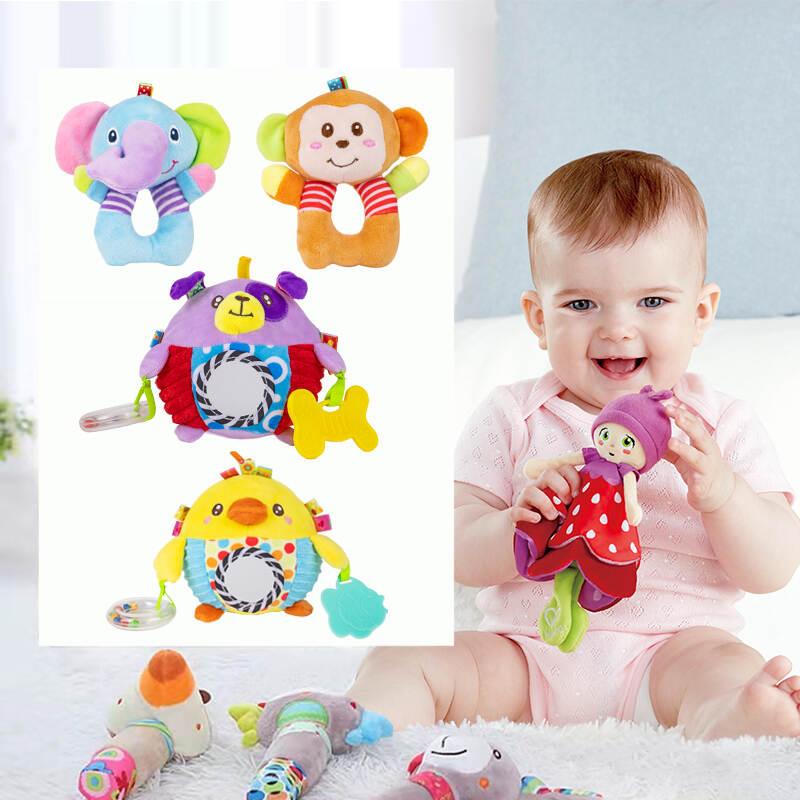
3. 3 to 6 Months: Baby mirror to encourage self-awareness, plastic teethers, board books and plush toys help babies explore the world around them.
As your baby grows and matures, you may be wondering what toys they should have during the 3-6 months stage. During this time, babies begin to explore the world around them and start to build a sense of self-awareness. They also start using their hands and fingers to reach for objects. There are many toys that can help encourage learning in this critical period of development. Here’s a list of toys you should consider buying for your baby between 3-6 months:
1. Baby Mirror – A baby mirror allows babies to discover and explore their own features, teaching them about self-awareness and learning about themselves in the process.
2. Plastic Teethers – Babies love to explore everything with their mouths including teething toys! Make sure you get plastic teethers that are BPA free so they’re safe for your baby's gums while they chew on them during the teething stages!
3. Board Books – Board books are fun stories but with fewer words, making it easier for babies to follow along with a developmentally appropriate level of reading skills. It’s also helpful because board books are sturdier than regular books, so babies won’t accidentally tear out pages as they explore it through playtime activities or when trying to turn pages while sitting alone by themselves.
4. Plush Toys – Plush toys have multiple textures combined with different shapes, sounds and tactile components which can help encourage exploration in a comfortable way for little ones who might still be hesitant about new things or unfamiliar experiences. They’re also great for snuggling!
By lifting these items together into your basket, you'll provide the perfect starting point for your baby's self-discovery journey during the 3-6 month mark as well as create an awesome toy collection that will provide enriching experiences as they quickly learn how to become more independent toddlers!
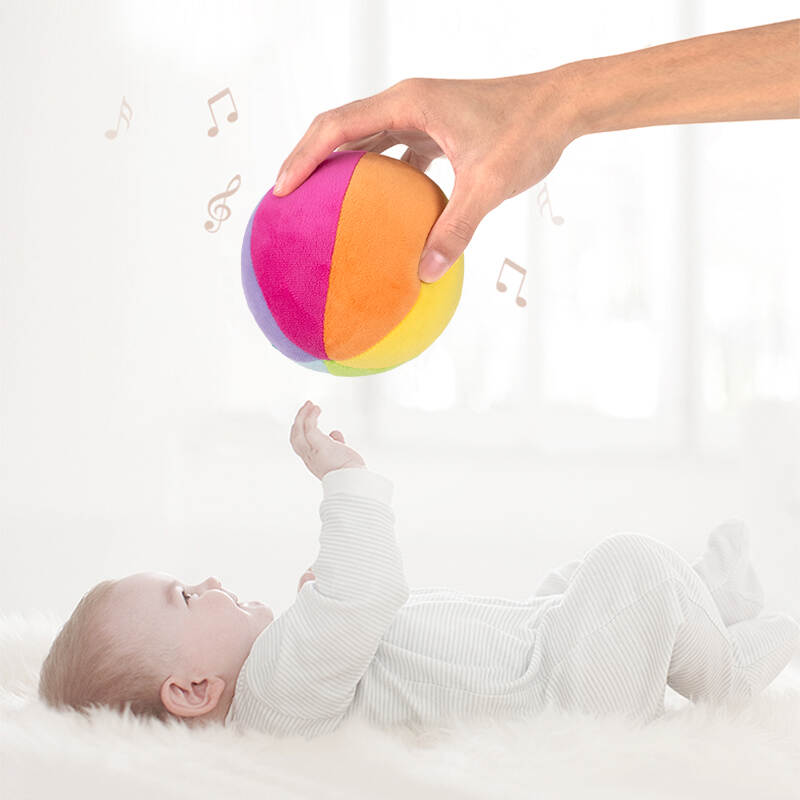
4. Benefits of Toys During the Early Years
As a parent, it is my responsibility to ensure my kid's development is on the right track. And early childhood toys play an important role in helping with development during the early years. While there are many advantages of buying toys for children such as personal satisfaction, improved cognitive skills and better overall motor development, there are more subtle benefits as well. Here's a list of some of the benefits from playing with toys during early childhood:
1. Toys Stimulate Imagination
Young children often use toys to create stories and fantasies, letting them explore the world around them safely. Toys provide not only entertainment but also tools for imagination for little ones’ minds to help them understand things about themselves and their environment.
2. Toys Develop Motor Skills
Toys can be used to help with gross motor skills like walking, running and jumping while smaller objects can help with fine motor skills like grasping or even something simple like fingernail hygiene. With every toy that your child plays with they're developing coordination and balance, becoming more adept at manipulating objects in various ways through practice and exploration – all of which helps them become stronger physically as well emotionally.
3. Toys Teach Problem Solving
It’s no secret that young children have difficulty identifying root causes of their problems - that's why problem-solving toys are so important during this period of development. Puzzles teach spatial relations; building blocks help exploratory thinking; construction kits support creative problem solving; language games stimulate intellectual growth; dollhouses nurture social competence; physical sports activities increase dexterity - these are all examples of how toys can help children identify solutions promptly when presented with life challenges later on in life.
4. Toys Encourage Sensory Development
Objects that encourage sensory input are very beneficial to young children exploring their environment for the first time and may develop more complex tactile systems through imaginative play later on in life—including construction kits, indoor pretend play sets (eg kitchen sets), musical instruments etc – those all provide sensory learning opportunities by having kids engage in "hands-on" manipulatives. Even stuffed animals cleverly designed to encourage different tactile sensations can be helpful teaching tools for toddlers developing coordination between eyes and hands while becoming comfortable with touch sensations at an early age!
5. Educational Benefits
Finally, educational books and board games go beyond providing entertainment value – they promote literacy skills while math games assist youngsters beginning basic arithmetic concepts while still having fun! Also, they learn cause and effect by understanding the effects their actions have on other players or their environment - something they cannot get quite as easily otherwise!
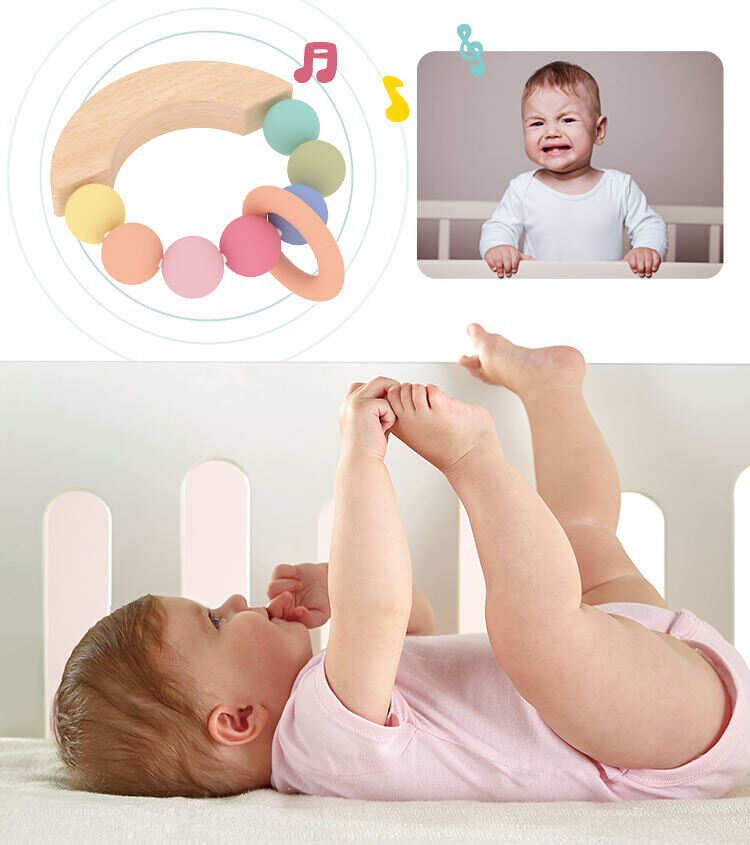
5. Types of Toys That Help Guide Development at Different Ages
When it comes to toys, there is no one-size-fits-all approach when it comes to helping guide development at different ages. What works for a 3 year old may not work for an 8 year old and vice versa. With that in mind, here are some tips on what types of toys you should consider buying your child which can help them learn and grow.
1. Infants: Babies between 0-12 months learn through sensory exploration, so providing them with items such as rattles and teethers can help them start exploring their world while enhancing development skills such as hand-eye coordination and fine motor control. Soft plush toys are also great for cuddling, while blocks can help develop spatial skills.
2. Toddlers: At this age, stimulating children’s minds through interactive toys is key. Throwing balls back and forth or playing hide-and-seek with a stuffed animal or doll provides an opportunity for toddlers to practice basic problem solving skills. Construction sets are perfect for building gross motor strength and hand dexterity as well as instilling an understanding of cause and effect relationships within the world around us.
3. Preschoolers: This age group loves puzzles! Those cute jigsaw puzzles can expand their problem solving skillsa nd improve abstract thinking since patterns have to be identified in order to complete the puzzle correctly Musical instruments such as drums, ukuleles or triangles provide a fun way to introduce basic music knowledge while getting physical too – try jumping while these instruments sound off!
4. School Agers: Science kits allow kids in this age range (5 – 12 years) explore physical properties like friction and gravity by experimenting with fun activities ranging from simple catapult launching to constructing a mini solar panel car! Board games also facilitate cooperation between friends while teaching strategies related to Risk Management & Planning during every game play session.. Creative arts projects also come highly recommended as they give younger children an outlet for self expression without leaving out the educational elements involved with expressing themselves through artistic creation (ie painting, drawing).
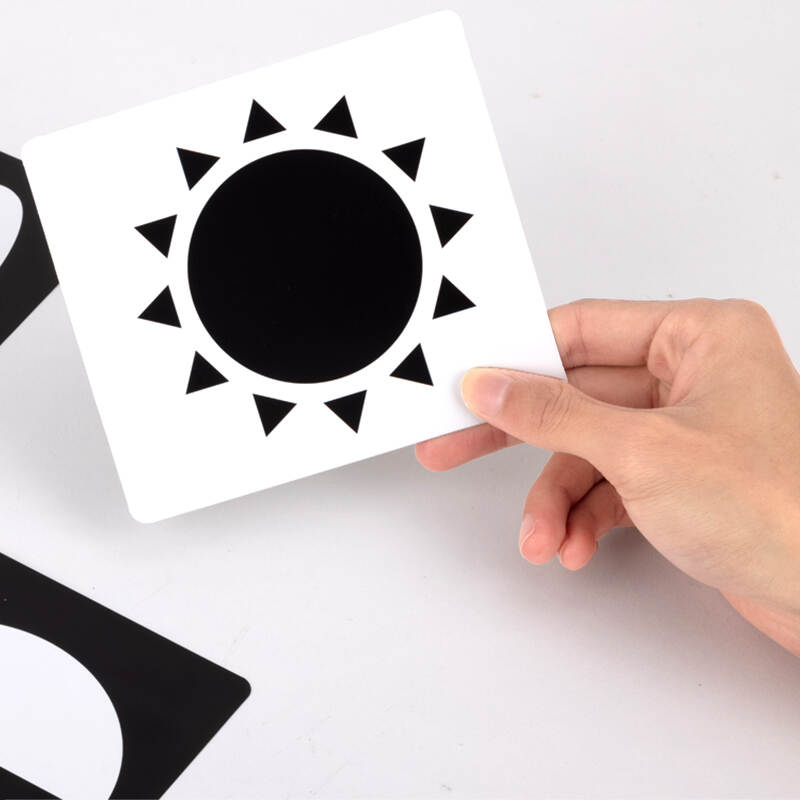
6. How to Choose Appropriate Toys
When it comes to choosing appropriate toys for children, it's important to take their developmental stage and interests into account. Here is a list of things to consider when shopping for age-appropriate toys:
1. Consider Manufacturer Recommended Ages
Manufacturer-recommended ages are a great place to start if you're unsure what type of toy would be suitable. Read the manufacturer guidelines carefully – just because an item says it’s suitable for 3–5 year olds doesn’t mean all 3 year olds can play with it safely or understand its purpose.
2. Take Into Account Your Child's Developmental Level
It's important to choose toys that correspond with your child's current level of development, not what they are expected to achieve in a few months or even years in some cases. Consider whether the toy challenges them without frustrating them – if it does, chances are you've found one that will grow with your child over time!
3. Select Toys Appropriate To Gender and Interests
Some toys may be marketed as “gender-neutral” but may send subtle messages about boy vs girl roles/behaviors through styling or content. Unless you’re striving for gender neutrality (not everyone is!), look at manufacturers that offer products which target either boys or girls specifically, because these will more likely reflect current cultural values and expectations around gender roles/behavior better than a much broader piece from an unknown source might do. Additionally, select educational gifts based on genre and interest - is your little one interested in science? Choose something interactive that provides an array of activities and experiments instead of passive pieces meant more for decoration/collection purposes!
4. Always Keep Safety In Mind
Most age recommendations come with safety warnings about choking hazards, lead paint concerns, small pieces etc., so make sure you read the fine print before buying any type of toy – even if the packaging looks innocuous enough! Children need stimulating environments rather than preventing access altogether by removing potentially hazardous objects (such as hard-packed foam blocks or small balls) or providing massive amounts of distractions. Create spaces that have fewer objects but are rich in experiential learning opportunities instead!
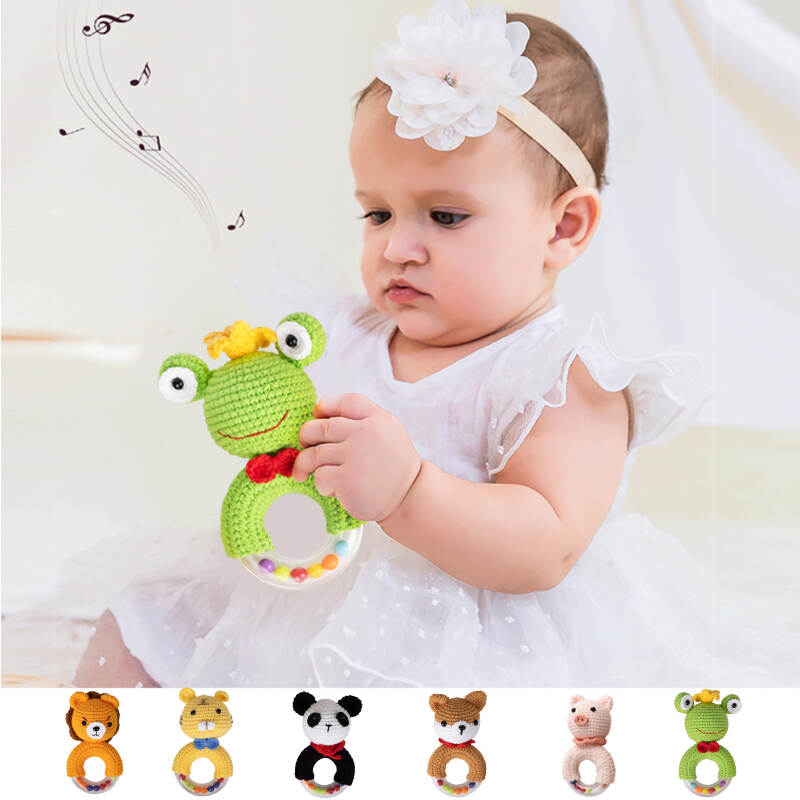
7. Common Baby Toy Safety Tips
Having a baby means making sure they're safe at all times. That includes toys! Baby safety and toy safety go hand-in-hand because accidents can happen even with the best intentions. As a parent, you need to know how to pick and use baby toys safely in order to keep your little one healthy and happy. With that said, here are some common baby toy safety tips:
1. Choose Safe Materials & Types of Toys
Safe materials for baby toys include plastics marked as "BPA-free" (Bisphenol A) or "phthalate-free". Avoid soft vinyl, polyvinyl chloride (PVC), and painted wood as these can be hazardous if ingested or inhaled by babies. Also pay attention to material size – small parts aren't suitable for children less than 3 years old due to choking hazard risk.
2. Inspect Second-Hand Toys Thoroughly
If buying second hand, inspect the toy carefully before purchasing it; broken pieces or sharp edges may injure your baby during playtime. Wash any used toys in warm soapy water where applicable before giving them to your baby; this will help eliminate potential germs or other contaminants they could have collected while stored away previously.
3. Ensure Proper Use of Electronic Toys
When buying electronic items such as projectors or lights, read the instructions precisely before allowing your child play with them - use only batteries recommended in the manual instructions and make sure that no internal components are exposed due to frequent replace casing/batteries usage that could potentially cause shocks when touched by curious fingers.
4. Add Supervision When Playing with Baby Toys
It's a good idea to supervise young children when they are playing with their toys – even if the toy appears age appropriate – ensure that small pieces get put away properly after use and avoid leaving babies unattended with anything that could pose a choking risk (such as blocks). Of course, it's just as important not to overextend yourself as some accidents may require immediate attention from an adult caregiver if something goes wrong!
5. Disinfect & Clean Baby Toy Regularly
Be sure to clean all of your child’s toys regularly with warm soapy water on a cloth – wipe off any drool, snotty residue or food particles then allow them dry completely before storing back in their proper place away from direct sunlight exposure which causes fading/deterioration quickly over time especially fabrics items like stuffed animals etc...
